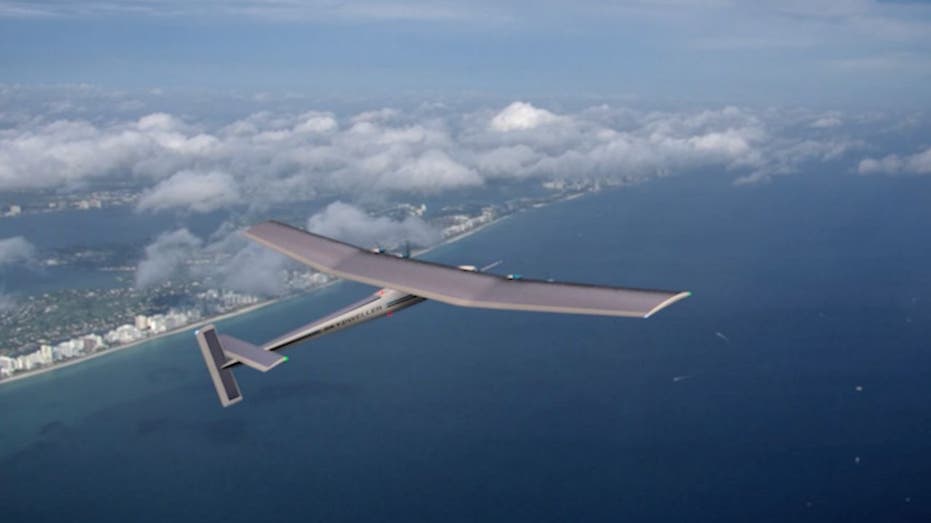Imagine an aircraft capable of staying airborne for weeks or even months without the need for refueling. This isn’t a scene from a science fiction movie; it’s becoming a reality thanks to advancements in solar aviation.
Skydweller Aero: A Leader in Solar Aviation
Skydweller Aero is at the forefront of this groundbreaking innovation with its cutting-edge solar-powered aircraft. As the world’s largest unmanned solar plane, Skydweller is redefining the possibilities within aviation and challenging the limits of endurance flight.
Milestone Achievement: 22½ Hours in the Sky
Recently, Skydweller Aero celebrated a major achievement by completing a series of uncrewed autonomous flight tests. The highlight of these tests was a remarkable flight that lasted 22½ hours, launched from the company’s facility at Stennis International Airport in Kiln, Mississippi. This milestone showcases the aircraft’s capability to remain airborne for extended periods by harnessing solar energy and utilizing battery power.
A Legacy of Innovation
What distinguishes Skydweller from other solar aircraft is its heritage. It is built upon the foundation of the Solar Impulse, the first solar-powered aircraft to circumnavigate the globe. This lineage equips Skydweller with a robust design that can carry substantial payloads. With an impressive wingspan of 236 feet—larger than that of a Boeing 747—and a lightweight construction of just 5,620 pounds (comparable to a Ford F-150), the Skydweller can transport up to 800 pounds of payload effectively.
Military Interest and Potential Applications
The United States Navy has shown considerable interest in Skydweller’s capabilities, as evidenced by recent flight tests conducted as part of a Joint Concept Technology Demonstration. This initiative, overseen by the Office of the Undersecretary of Defense for Research and Engineering, previously contributed to the development of military platforms like the Global Hawk and Predator. The goal is to evaluate the potential of autonomous maritime patrol aircraft, with Skydweller’s long endurance positioning it as a game-changer in maritime surveillance and patrol operations.
Enhancing National Security
Skydweller Aero’s unmanned solar-powered aircraft is designed for continuous surveillance, significantly enhancing maritime border security and monitoring against illegal fishing and trafficking activities. Its ability to maintain prolonged flight hours enables it to provide round-the-clock coverage, bolstering national security efforts.
Connecting Remote Areas
Beyond military applications, Skydweller Aero is committed to offering cost-effective, airborne communication solutions to remote and underserved regions. This capability ensures connectivity for populations that lack access to traditional telecommunications infrastructure, thereby promoting economic growth.
Disaster Response and Environmental Monitoring
In times of crisis, Skydweller Aero’s aircraft can swiftly respond to natural disasters, providing real-time aerial assessments, communication relays, and tracking for relief operations. The solar-powered endurance guarantees extended, reliable coverage, complementing other emergency assets or filling gaps where conventional options may be unavailable or costly.
Furthermore, the aircraft is poised to play a vital role in environmental and scientific research. From monitoring climate change and wildfires to conducting geophysical surveys, Skydweller enables extensive data collection across vast areas, contributing significantly to environmental protection initiatives.
Future Aspirations and Challenges
While military applications are a primary focus, Skydweller Aero is also looking toward commercial markets. CEO Robert Miller envisions a future where solar-powered aircraft function as airborne communication platforms, working in synergy with satellite networks. He believes that solar aircraft can enhance low-Earth orbit satellite communications rather than compete directly with them, offering continuous coverage in specific areas.
However, the journey to developing a solar-powered aircraft is not without its challenges. Previous attempts by various companies have faced hurdles. Skydweller’s success can be attributed to its team’s expertise in aeroelasticity, which ensures the aircraft can endure the stresses of flight. “My team possesses a wealth of experience in aeroelasticity that surpasses that of all other solar programs combined,” Miller states.
A New Era in Aviation
As the world’s largest unmanned solar aircraft, Skydweller Aero is paving the way for a new era in aviation, opening doors to exciting possibilities. From enhancing maritime patrols to serving as airborne communication networks, the potential applications are vast. While obstacles remain, Skydweller’s recent successful test flights demonstrate the remarkable progress made in solar aviation technology.












